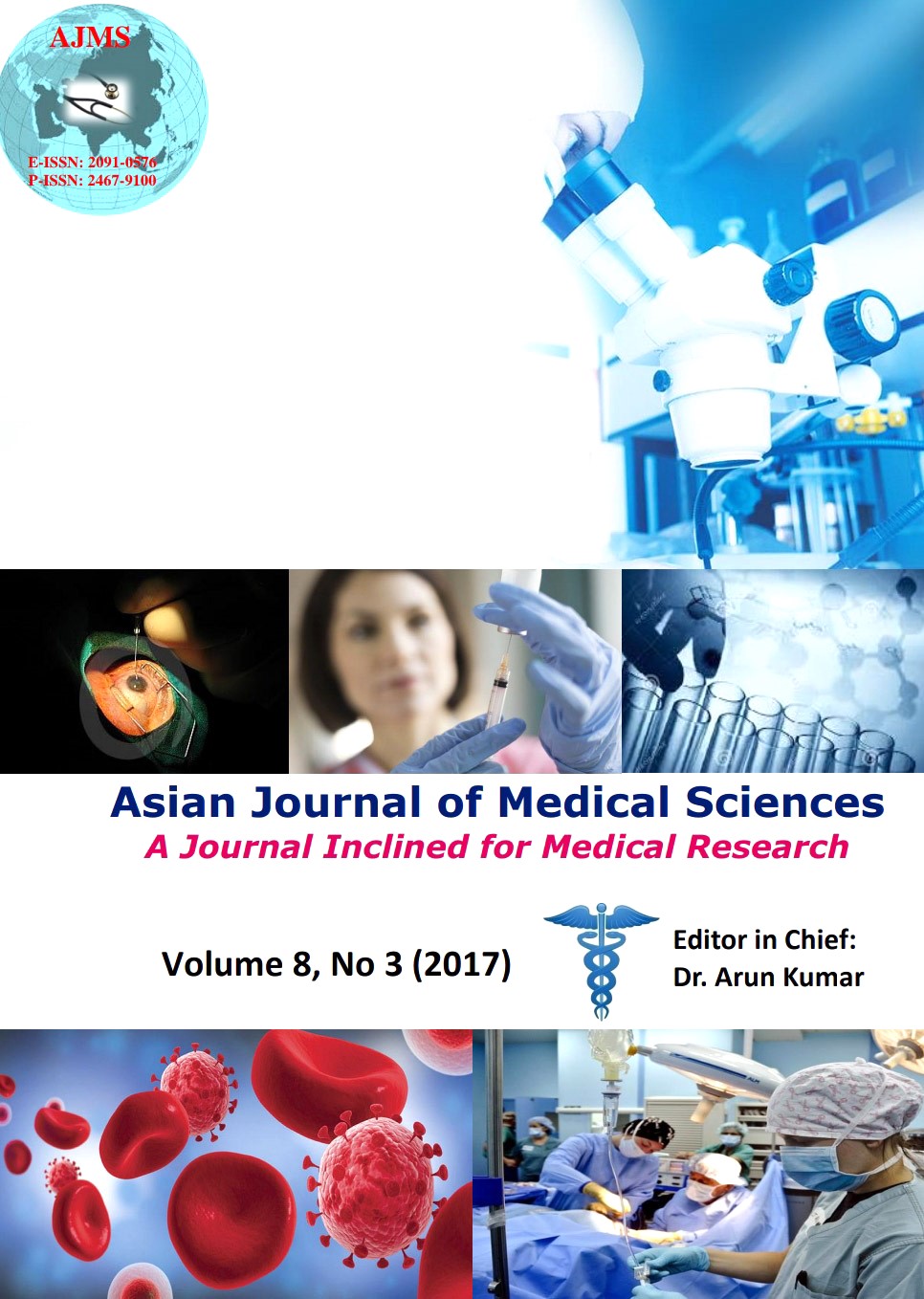Estimation of indirect reference intervals for serum thyrotropin using hospital records
Keywords:
Indirect reference intervals, Thyrotropin, Hospital records, Non-parametricAbstract
Background: Reference intervals of any biochemical analyte serve as an invaluable tool in clinical decision making. The IFCC (International Federation of Clinical Chemistry) guidelines for determining these values are not feasible in some hospital laboratory setting and have led to the development of alternative approaches.
Aims and Objectives: To determine the indirect reference intervals for serum thyrotropin form the hospital records of individuals visiting a tertiary care center.
Materials and Methods: In a hospital-record based, observational, cross-sectional study, data of serum TSH levels were collected from the hospital records of participants who underwent this test in the Central Clinical Laboratory, College of Medical Sciences and Teaching Hospital, Bharatpur, Chitwan, Nepal from July 2012 to June 2015. All the individuals, irrespective of their diagnoses of thyroid diseases and other possible comorbid conditions, were included in the study. Prior to the statistical analyses, partitioning was done in relation to gender, age, and ethnicity. The reference intervals for thyrotropin were established by non-parametric method.
Results: Reference intervals for serum TSH best agreeing to those provided by the test kit suppliers were determined by combining the two strategies that used Tukey’s method of detection and removal of outliers, prior to the final analyses. Lower limit was best determined from the natural-log-transformed and upper limit from non-transformed TSH values with outliers removed by Tukey’s method in both. As such, for the cases with TSH in the range 0.02-98.8 mIU/L, the reference intervals were calculated as [0.31 (0.30-0.33) to 6.04 (5.97-6.12) mIU/L] and for the TSH in the range 0.102-9.99 mIU/L, [0.35 (0.34-0.37) to 5.81 (5.75-5.90) mIU/L].
Conclusion: For establishing the indirect reference intervals from the hospital records, laboratory data can be combined with information stored in clinical databases for selecting subjects fulfilling stated clinical criteria.
Asian Journal of Medical Sciences Vol.8(3) 2017 41-48
Downloads
Downloads
Additional Files
Published
How to Cite
Issue
Section
License
Authors who publish with this journal agree to the following terms:
- The journal holds copyright and publishes the work under a Creative Commons CC-BY-NC license that permits use, distribution and reprduction in any medium, provided the original work is properly cited and is not used for commercial purposes. The journal should be recognised as the original publisher of this work.
- Authors are able to enter into separate, additional contractual arrangements for the non-exclusive distribution of the journal's published version of the work (e.g., post it to an institutional repository or publish it in a book), with an acknowledgement of its initial publication in this journal.
- Authors are permitted and encouraged to post their work online (e.g., in institutional repositories or on their website) prior to and during the submission process, as it can lead to productive exchanges, as well as earlier and greater citation of published work (See The Effect of Open Access).




